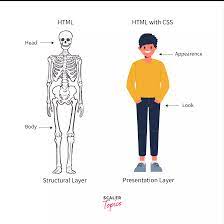There are two main coding languages that add structure to a webpage. One being HTML and another being CSS. HTML is the hypertext markup language that in short describes the structure of a webpage. HTML is important because it allows you to use tags and elements to create headings, sections, and links on a website. HTML is very important in building any website as it is the basic structure base that is used for anyone creating a website or improving an existing one. CSS stands for cascading style sheets. This differs from HTML as it is used to style and lay out a webpage. An example of style could be the colors you decide to use and an example of layout could be the format you chose. Both HTML and CSS are vital components of creating an effective and functioning website. HTML is the backbone, whereas CSS is the visual appearance being portrayed. I did some research and found that the first version of HTML was created in 1993 by a man named Tim Berners-Lee. HTML was originally created to distribute simple structured documents. There have been many versions of HTML, and the one used now is HTML5. CSS was invented just three years later by a man named Hakon Wium Lie. CSS was originally created to solve the issue of adding color and appearance to very large websites.

This image is very helpful in visualizing that HTML is the “bones” to a webpage and CSS adds the appearance and color to it.
Leave a Reply
You must be logged in to post a comment.